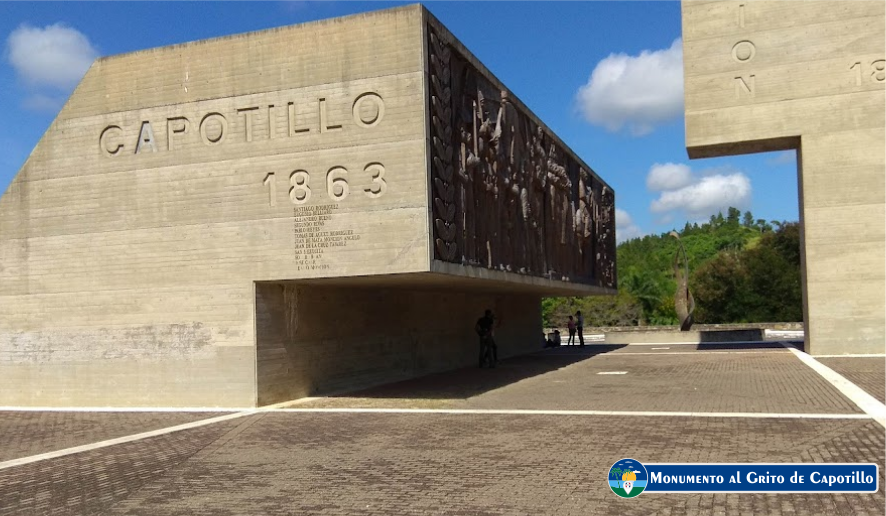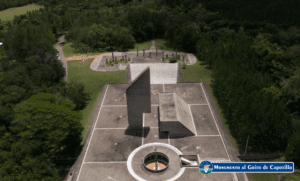
Monument to the Grito de Capotillo is a monument that was erected to honor the memory of the heroes of the Restoration, a war that lasted 2 years between the Dominican nationalists and the Spanish army.
The Monument, considered a historical sanctuary, is located in the northeast of the country, in the Dajabón province, in a mountainous area, near Loma de Cabrera. There, among the greenery of the trees and the solitude, it is almost forgotten and is only remembered every August 16, Restoration Day.
It is a historical sanctuary that is visited mainly on August 16, the day of restoration that traces an important period in the history of the Dominican Republic. A monument that every Dominican must visit at some point in their life.
A place of visit for colleges and universities across the country for young people to learn the value of the men and women who gave their lives for freedom. A place that can also be visited by foreign tourists to learn and better understand the culture and history of the Dominican Republic.
Why should we go? In addition to taking the opportunity to get to know the Dajabón province, its people and its customs, it is an excellent opportunity to learn about our past and learn about history. Perhaps this will encourage cultural tourism and force the authorities to make an effort to pay more attention to the monument and its surroundings, which are forgotten, just as the past is forgotten.

Isolated between the Caribbean mountains of Loma de Cabrera, in Dajabón, and thrown into oblivion, both by the authorities and by the lack of interest of the citizens, the Monument of Capotillo remains most of the time, with which the Grito de Capotillo is commemorated which marked the beginning of the Restoration War.
One of the many ways to preserve the memories and deeds of the men and women who “built” the nation, with their historical struggles that mark a people, is through monuments, works carried out with the aim of always keeping alive in the conscience of the generations that follow him, the moral and civic values, by which every citizen must be guided and for which they (the predecessors) fought.
Precisely, trying to ensure that Dominicans do not forget the effort, dedication and sacrifice of their compatriots, in 1986 the Capotillo Monument was inaugurated, during the mandate of Salvador Jorge Blanco. Its objective? To honor the memory of the heroes of the Restoration, in its original setting, since the so-called “Grito de Capotillo” was launched there, which marked the restorative feat.
The Monument, considered a historical sanctuary, is located in the northeast of the country, in the Dajabón province, in a mountainous area, near Loma de Cabrera. There, among the greenery of the trees and the solitude, it is almost forgotten and is only remembered every August 16, Restoration Day.
Why should we go? In addition to taking the opportunity to get to know the Dajabón province, its people and its customs, it is an excellent opportunity to learn about our past and learn about history. Perhaps this will encourage cultural tourism and force the authorities to make an effort to pay more attention to the monument and its surroundings, which are forgotten, just as the past is forgotten.
Isolated between the Caribbean mountains of Loma de Cabrera, in Dajabón, and thrown into oblivion, both by the authorities and by the lack of interest of the citizens, the Monument to the Grito de Capotillo remains most of the time, with which the Grito de Capotillo is commemorated which marked the beginning of the Restoration War.
The work was erected to honor the memory of those who left their “skin” in a guerrilla war, which lasted two years (from 1863 to 1865) between Dominican nationalists and the Spanish army, which after 17 years of independence returned to subjugate to the Dominican Republic, after the annexation made by Pedro Santana.
According to consulted data, with this fight it was also sought to avoid the implantation of the monopoly on the part of the Cibaeño harvesters and merchants; and the rebellion against Annexation, which became the main stronghold during the years 1863-1865.
To learn about our history and many interesting places in the Dominican Republic, follow us at visitadominicana.com
How to get to the Monument to the Grito de Capotillo: CLICK HERE!
